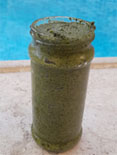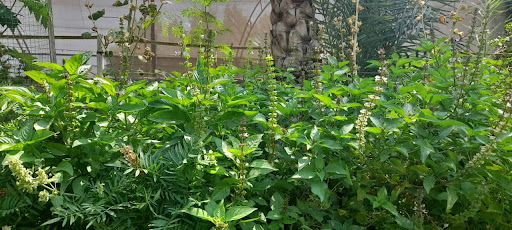
Pesto. Second only to hummus, pesto is one of the most superior spreads known to humankind. You may be familiar with the Italian version. But have you ever had “Egyptian pesto”? I can say with almost 100 percent certainty that you have not because, well, ahem…I invented Egyptian pesto in my very own kitchen.
To fully understand my obsession with pesto, we have to flip the calendar back a few years to 2008. My husband and I bought a home with a yard in Northern Virginia in the United States. We dreamed of turning that yard into a self-sustaining kitchen garden.
The dream lasted only for one season. One harvest of bitter lettuce, stubby carrots, and rotten potatoes, and I gave up. I decided to go the way of all contemporary farmers and cultivate a monoculture. There was only one logical choice, really, for our monocrop: basil.
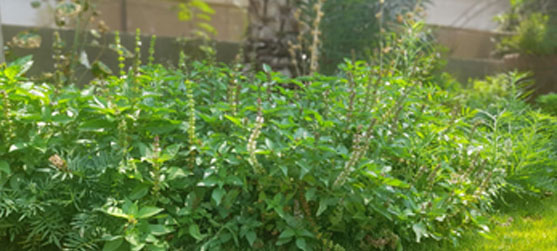
Basil grew like gangbusters in our backyard. The plants grew thick and fast, and by October I had a veritable forest of basil right outside my kitchen window. I knew what to do with it. I waded into that basil grove one fall day and harvested every last spicy leaf. Back in the kitchen, I established a pesto factory. Tubs of pine nuts, bottles of olive oil, bags of shredded parmesan, and cloves of garlic stood neatly at attention on my kitchen counter. Final step: blending. I did not stop until I blended my entire basil harvest into pesto and little ziplocks of the green sauce filled my entire freezer.
If you consider my dedication to the project and delight in the product – a year’s supply of pesto for pizza, pasta, sandwiches, etc.– you can then imagine my sad little sniffle when I moved to Egypt and reluctantly prepared myself emotionally to give up my annual pesto making and preservation. Oh, don’t get me wrong; Egypt is worth it and all, but still. I knew I would miss having pesto on hand.
Well, it’s as they say: you can take pesto away from the girl, but you can’t take a girl away from her pesto. I had not been living in Maadi long before I began spotting basil plants. A lot of basil plants. I discovered that basil is a popular landscaping plant in Maadi. Pass by any villa or upscale apartment building and you’ll find basil plants in the front garden. The Egyptian variety is bushier than the Genovese basil I cultivated in Northern Virginia. The leaves are smaller, so you have to work harder to pick a sufficient quantity to make a decent batch of pesto.
I can hear you asking: “But Jamila, can you even get pine nuts and parmesan in Egypt?” On my budget? Not a chance. Did that stop me? Need you ask?
Listen, if you are a rigid purist, then forget about it. You won’t make it here in Egypt. But if you can adapt to your environment, you will thrive. With that mindset, I developed my “Egyptian Pesto” recipe.
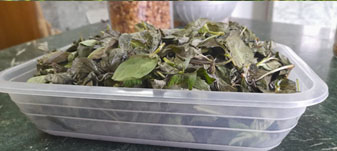
The basil: if you live in Maadi, just pluck off a few branches here and there when out on your daily constitutional. Pluck the leaves from the branches and stems when you get home. Wash the leaves and toss the branches and stems into the trash or compost.

The olive oil: if possible, pop on over to Siwa and grab a couple of liters of premium extra virgin oil at half the supermarket price. If, however, this just isn’t the right time for a quick trip to an oasis in the Great Dune Sea, you may affordably substitute Siwan olive oil with the pure olive oil sold in the ubiquitous Egyptian military surplus stores located all over Cairo. Yes, It has a stronger taste than extra virgin but it works with the pesto. Trust me on this.
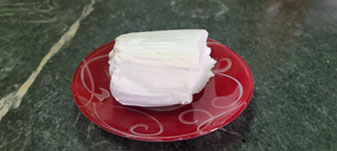
The cheese: substitute imported parmesan with locally-produced gibna arish – Egyptian white cheese. Gibna arish is the unicorn of cheeses: inexpensive and delicious. You’ll find pieces of it in tubs of water in the dairy refrigerator of your local supermarket. Just ask for one piece and try it out. Hot tip: gibna arish makes a perfect snack. Eat half of your piece of gibna arish with olive oil, za’tar (Jordanian thyme), and aish baladi (Egyptian pita). Reserve the rest for your pesto.
Throw the gibna arish into the food processor along with the basil, garlic, and oil, and blend. Add salt and pepper to taste. As for pine nuts? Just skip them! My purist husband was offended by this at first, but even he had to admit that my “Egyptian pesto” tastes delicious – with or without nuts. We don’t even miss the nuttier original.
Hey, the proof is in the pudding, as they say. Try it! Put some on toast (trending in my house these days), pizza, or pasta. You’ll see. Your people will love it. Bil hana wa shifa!
